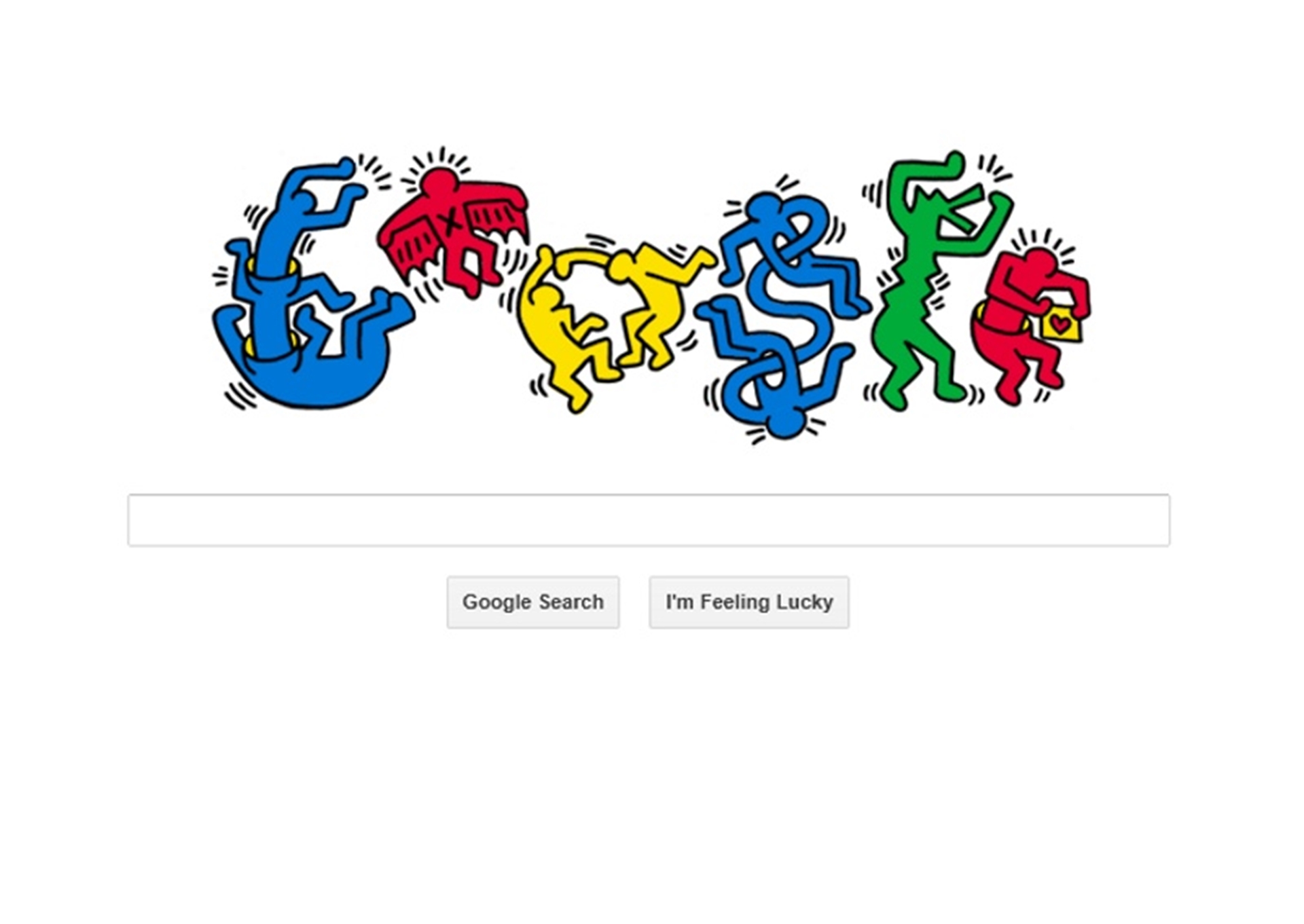Today 4 May 2012 Google is commemorating the birthday of Keith Haring (1958 -1990). Keith Haring’s bold lines and active figures carry poignant messages of vitality and unity. His legacy made an impact on late 20th century art and grants us all a vision for the future. Today Google is honoring the legacy of Keith Haring with a Google Doodle on their homepage.

Who was Keith Haring?
He was an artist, cartoonist and social activist who worked mainly in New York City, Recording American Life in New York City with his art and cartoons. He studied at the Ivy School of Professional Art in Pittsburgh US between 1976 and 1978 where he studied commercial art. Instead of focusing on Commercial Art he soon switched to Fine Arts for which he had a burning passion.
https://www.youtube.com/watch?v=jyvIRZG6b_M
In 1978 Keith Haring moved to New York City where he studied at the School of Visual Arts. Here he found a particular interest in Graffiti. In New York City Keith Haring were first in the spot light for his Graffiti and Chalk drawings in the New York Subways.
As a student at SVA, Keith Haring experimented with performance, video, installation and collage, while always maintaining a strong commitment to drawing. In 1980, Keith Haring found a highly effective medium that allowed him to communicate with the wider audience he desired, when he noticed the unused advertising panels covered with matte black paper in a subway station. He began to create drawings in white chalk upon these blank paper panels throughout the subway system.
Between 1980 and 1985, Keith Haring produced hundreds of these public drawings in rapid rhythmic lines, sometimes creating as many as forty “subway drawings” in one day. This seamless flow of images became familiar to New York commuters, who often would stop to engage the artist when they encountered him at work. The subway became, as Keith Haring said, a “laboratory” for working out his ideas and experimenting with his simple lines.
Throughout his career, Keith Haring devoted much of his time to public works, which often carried social messages. He produced more than 50 public artworks between 1982 and 1989, in dozens of cities around the world, many of which were created for charities, hospitals, children’s day care centers and orphanages.
The now famous Crack is Wack mural of 1986 has become a landmark along New York’s FDR Drive. Other projects include; a mural created for the 100th anniversary of the Statue of Liberty in 1986, on which Keith Haring worked with 900 children; a mural on the exterior of Necker Children’s Hospital in Paris, France in 1987; and a mural painted on the western side of the Berlin Wall three years before its fall. Keith Haring also held drawing workshops for children in schools and museums in New York, Amsterdam, London, Tokyo and Bordeaux, and produced imagery for many literacy programs and other public service campaigns.
Keith Haring was diagnosed with AIDS in 1988. In 1989, he established the Keith Haring Foundation, its mandate being to provide funding and imagery to AIDS organizations and children’s programs, and to expand the audience for Keith Haring’s work through exhibitions, publications and the licensing of his images. Keith Haring enlisted his imagery during the last years of his life to speak about his own illness and generate activism and awareness about AIDS.
Keith Haring died of AIDS related complications at the age of 31 on February 16, 1990. A memorial service was held on May 4, 1990 at the Cathedral of St. John the Divine in New York City, with over 1,000 people in attendance.
Since his death, Keith Haring has been the subject of several international retrospectives. The work of Keith Haring can be seen today in the exhibitions and collections of major museums around the world. – Source
Keith Haring Legacy and contribution to Aids awareness
Keith Haring died February 16, 1990 of AIDS-related complications. As a celebration of his life, Madonna declared the first New York date of her Blond Ambition World Tour a benefit concert for Keith Haring’s memory, and donated all proceeds from her ticket sales to AIDS charities including AIDS Project Los Angeles and amfAR; the act was documented in her film Truth or Dare. Additionally, Keith Haring’s work was featured in several of Red Hot Organization’s efforts to raise money for AIDS and AIDS awareness, specifically its first two albums, Red Hot + Blue and Red Hot + Dance, the latter of which used Keith Haring’s work on its cover.
By expressing concepts of birth, death, love, sex and war, Keith Haring’s imagery has become a widely recognized visual language of the 20th century.
Google Doodle Keith Haring
In the Google Doodle you can see resemblence to the work of Keith Haring. The Google Doodlers have done a stunning Job representing
art work and legacy.

The Keith Haring Foundation
The Keith Haring Foundation makes grants to not-for-profit groups that engage in charitable and educational activities.
In accordance with Keith’s wishes, the Foundation concentrates its giving in two areas: The support of organizations which provide educational opportunities to underprivileged children and the support of organizations which engage in education, prevention and care with respect to AIDS and HIV infection.
For more information about the Keith Haring Foundation you can visit there website at
.
Vote for your favorite Google Doodle
Google have just announced there finalists for the best Doodle 4 Google in the States. You can
vote for the best Doodle 4 Google
between 2th May 2012 and 10th May 2012.
https://www.youtube.com/watch?v=QjRRks0JFe8


